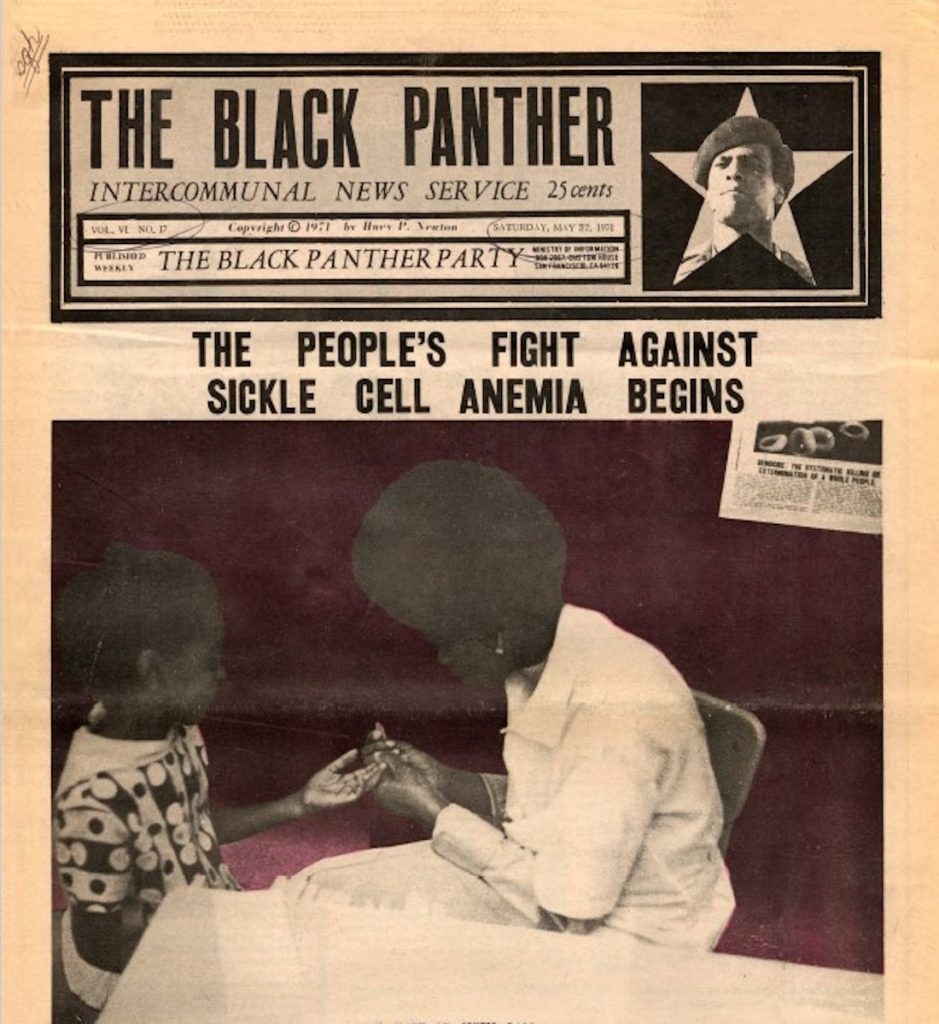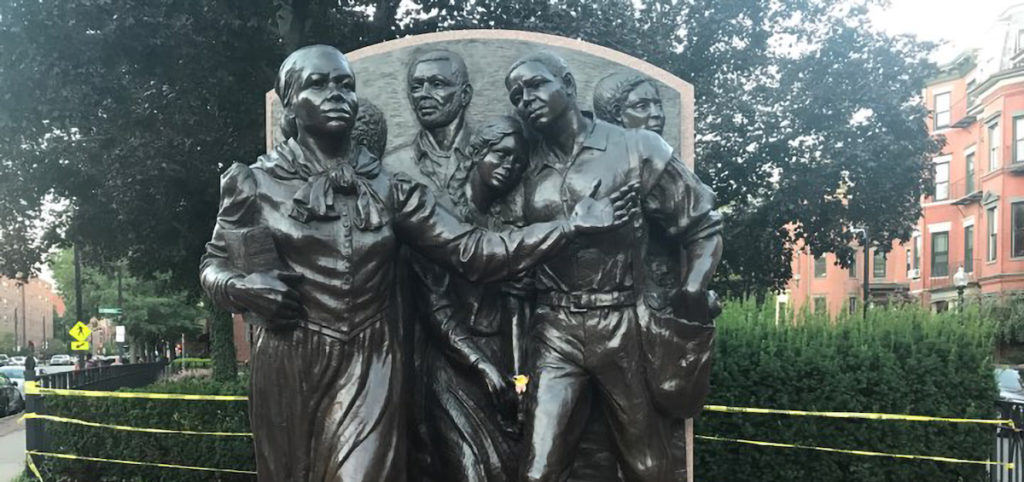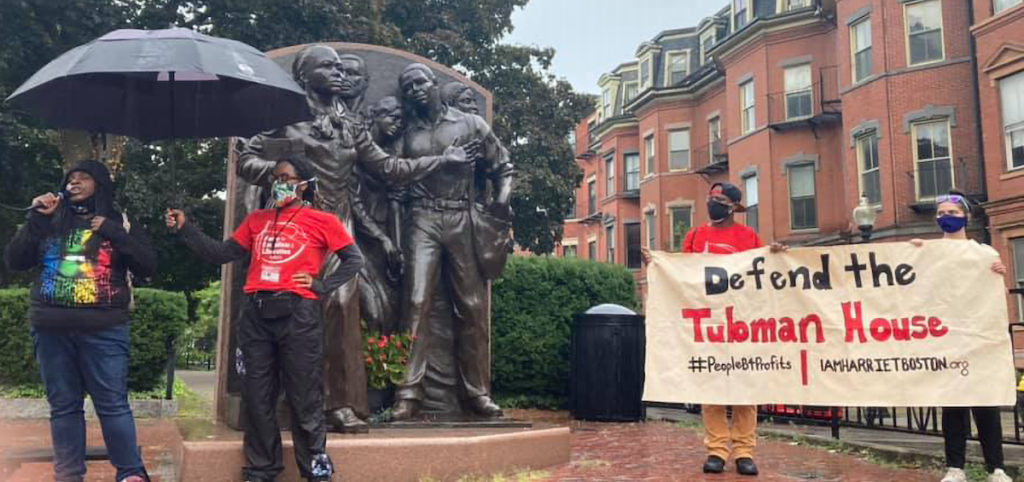This article is part of Liberation’s commemoration of Black History Month, 2021.
The usual “revolutionary” history taught about Boston centers on colonizers who waged war for a “democracy” that only served white land-owning men. History books often stop there and leave out the true revolutionaries of Boston — Black socialists and freedom fighters who defined the fight against capitalism and national oppression here and across the nation.
Black Panther Party of Boston and the Franklin Lynch People’s Free Health Center
The Black Panther Party for Self Defense was a Black liberation organization founded in Oakland, Calif., to protect the Black community from racist police violence. Chapters developed across the country that organized around the necessity for a socialist revolution inside the United States. The BPP’s political education centered Marxism and anti-imperialism and put these values into action through their international solidarity with liberation movements in the Global South.
In Boston, the BPP established a variety of “survival programs” that were motivated by the desire to move toward self-determination and to raise the political consciousness of the Black community. Locally, these programs included a Free Busing to Prison Program, Free Breakfast Program, Free Clothing Program and the Franklin Lynch People’s Free Health Center.
The health center was named after Franklin Lynch, a young Black man who was killed by Boston police while a patient at Boston City Hospital. Housed in a trailer, the center occupied abandoned public land on Ruggles and Tremont Street, where a highway was slated to be built through the historically Black community of Roxbury, and which was later shut down due to a years-long mass movement against its construction.

With the help of community volunteers and medical professionals, the BPP exposed the racist medical discrimination faced by the Black community by providing free sickle cell anemia testing, lead testing, immunization shots, tuberculosis tests, gynecological services, and general medicine.
As a testament to the BPP’s established trust and capabilities, on Feb. 25, 1971, 14-month-old Stacey Burston received a corrective eye operation at the health center to fix a birth defect after being told by neglectful doctors at Boston Children’s Hospital to simply wear glasses as the condition worsened.
As explained in a 1971 BPP newspaper:
“[W]ithout the people, the Free Health Center would not be accomplished and would also lose the reason for its existence, that being to serve the people. … Only through survival programs such as this can we survive the racist oppression of American society until we can organize ourselves in a political fashion and seize power, and meet the basic needs of all people!”
Harriet Tubman
As a revolutionary fighter for Black liberation, Harriet Tubman played a critical role in the operation of the Underground Railroad, a covert network of safehouses and routes, making 19 trips from the South to the North over a period of 10 years, escorting over 300 enslaved Africans to freedom.
In 1863, during the Civil War, Tubman engineered and commanded the raid at Combahee Ferry that freed over 750 slaves becoming the first woman to plan and execute a military operation. Despite acting as a spy for the North in the Civil War, the U.S. government denied her payment for her wartime service. Toward the end of her life, Tubman helped found a home for ill and elderly African Americans in Auburn on land she purchased.

Although she never formally lived in Boston, her visits left an imprint on the city. Due to her leadership in the abolitionist movement and her rousing speaking skills, she was a sought after public speaker and spoke in Boston at various gatherings of abolitionists and women’s organizations on the rights of Black women, women’s suffrage, and the welfare of formerly enslaved peoples.
Inspired by her words and action, Boston resident Julia Henson, a personal friend of Tubman, founded the Harriet Tubman House in the South End alongside six other Black women to provide refuge and support for recently arrived young women and girls from the South in the early twentieth century.
In 2019, the I Am Harriet Coalition was formed to protect and preserve the Harriet Tubman House from being converted into luxury condominiums replacing a long standing community and cultural center in the South End. Coalition members spoke out about the lack of substantial community input in the city-driven process which gave a green light to the demolition, and the crushing impact of gentrification in the South End.

The Step on Board sculpture depicting Harriet Tubman was made by the late Black sculptor Fern Cunningham, who was the first person in Boston to create a city-owned statue featuring a woman. Installed in the South End of Boston in 1999, the piece depicts Tubman in her youth among her people and with a bible in her hand; a testament to her life of service toward the cause of the abolition of slavery and her spiritual practice as a member of the AME Zion Church, or the Freedom Church, alongside other members like Sojourner Truth and Frederick Douglass.
Harriet Tubman’s bravery and ceaseless struggle against the enslavement of Africans paved the way for many women revolutionaries who followed — from Ida B. Wells to Assata Shakur and beyond. Tubman’s legacy is a reminder for all women warriors today that revolutionary change is possible to achieve through organized struggle.
Combahee River Collective and the Committee to End Sterilization Abuse in Boston
The Combahee River Collective was founded in 1974 in Boston and emerged during a period of intensified racist violence in the city. The Collective was informed by the heightened antiwar, Black liberation, LGBTQ liberation, and women’s movements across the country.
The CRC members identified as socialists and were committed to the liberation of all oppressed peoples with primary emphasis on understanding and organizing efforts that spoke to the unique plight faced by Black women both locally and internationally. This sentiment is evident in the collective’s name which commemorates the 1853 raid on the Combahee River led by Harriet Tubman freeing 750 enslaved people.
The CRC’s own contributions to the radical Black feminist tradition in Boston included fighting for abortion rights, against domestic violence, and against the sterilization of Black and Brown women. The CRC worked alongside the Committee to End Sterilization Abuse in Boston and together, they organized demonstrations at Boston City Hospital calling attention to the abuse faced by the poor.
Their organizing efforts included supporting Ella Ellison, a Black woman, facing two life sentences for robbery and first degree murder. The CRC joined the fight to free Ella Ellison and eventually all charges in her case were dropped. There was also the case of Dr. Kenneth Edelin, a Black OB-GYN who performed safe and legal abortions but was tried in court for manslaughter. The CRC and CESA organized public pressure and court support and Edelin was acquitted.
In 1977, the CRC penned a groundbreaking piece called the Combahee River Collective Statement, that synthesized their understanding of the material impact that capitalism, patriarchy, heteronormativity, and racism had on creating a political identity for Black women living at this intersection and articulated a vision for revolutionary action.
While rooted in a queer, Black, and socialist feminist perspective, the CRC knew that the liberation of Black women would fundamentally include the liberation of all oppressed people. “If Black women were free, it would mean that everyone else would have to be free since our freedom would necessitate the destruction of all the systems of oppression.”





